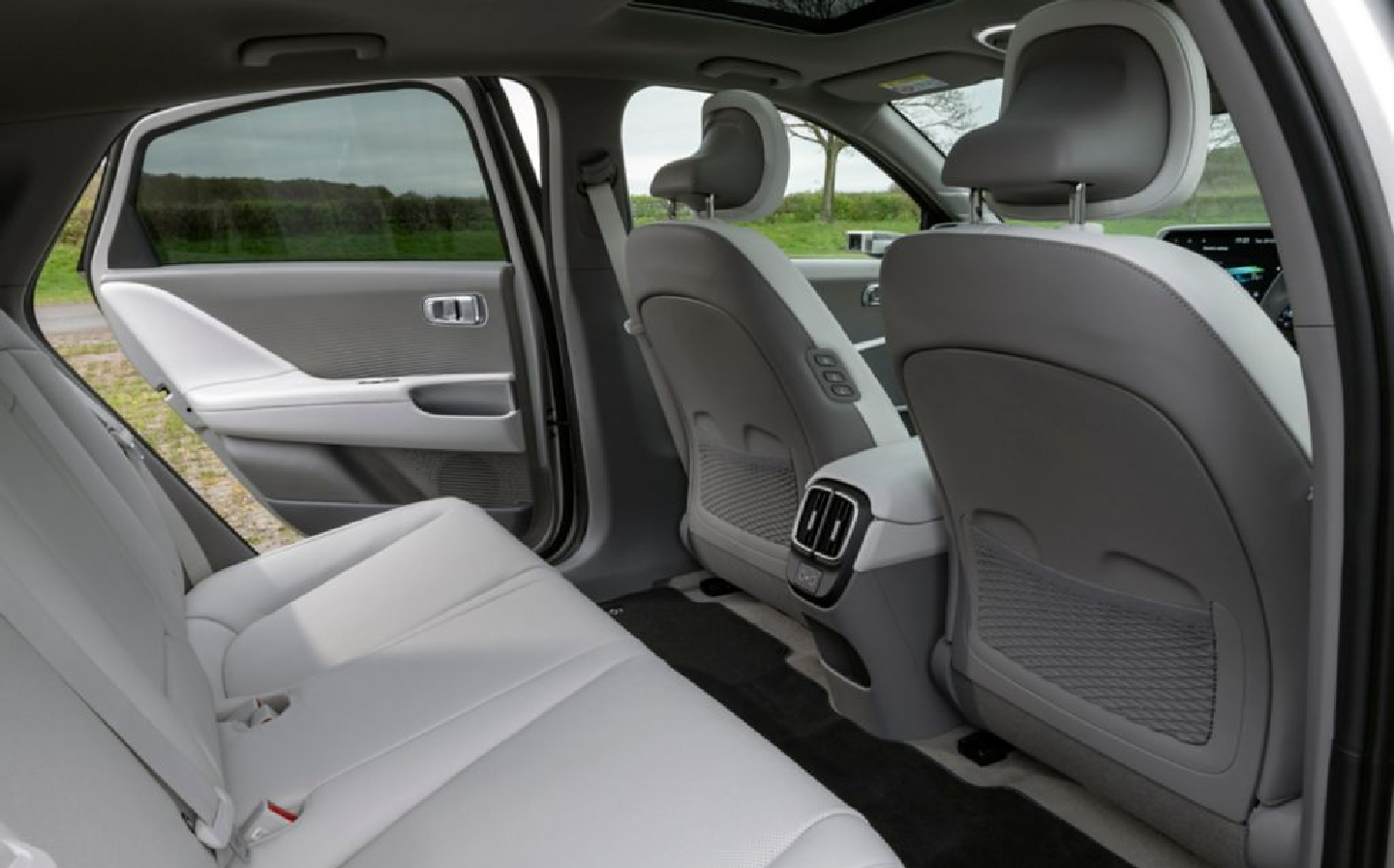Hyundai Ioniq 6 2023 review: Electric saloon will streamline your commute
The joy of 6?
Thank god for car makers that think a little bit differently. Traditionally Citroën has been the most “out there” car maker (think 2CV and DS, among many others), but Hyundai (now to be pronounced hyun-day, by the way) is without doubt having fun with the design of its cars right now, on the back of increasing market share worldwide. The car you’re looking at here, the Ioniq 6, is probably the Korean brand’s boldest model yet; as if a car designer’s fever dream has been made real.
Shaped to maximise aerodynamic efficiency, enabling its pure-electric powertrain to take you further between charges, and with an evolution of the motor and battery packs found in the funky Ioniq 5 crossover, it’s pitched as a technical tour-de-force as much as a statement car.
And yet its main role may end up being altogether more perfunctory: when I visited Hyundai’s hometown of Seoul a few weeks ago I noticed Ioniq 6s everywhere, and almost exclusively with cab company logos on the doors. Could this be little more than the new Toyota Prius, then, or should we actually be as excited about it as Hyundai wants us to be?
Design and rivals
Undecided about the look of the Ioniq 6? That makes two of us, quite frankly, but there’s no doubt that what Hyundai has achieved aerodynamically is impressive; its 0.21 drag coefficient means it’s very nearly as slippery through the air as a high tech Mercedes EQS (0.20cd), and more aerodynamic than a Tesla Model 3 (0.23cd). This is good for efficiency, of course, and helps eke out the miles between recharges.
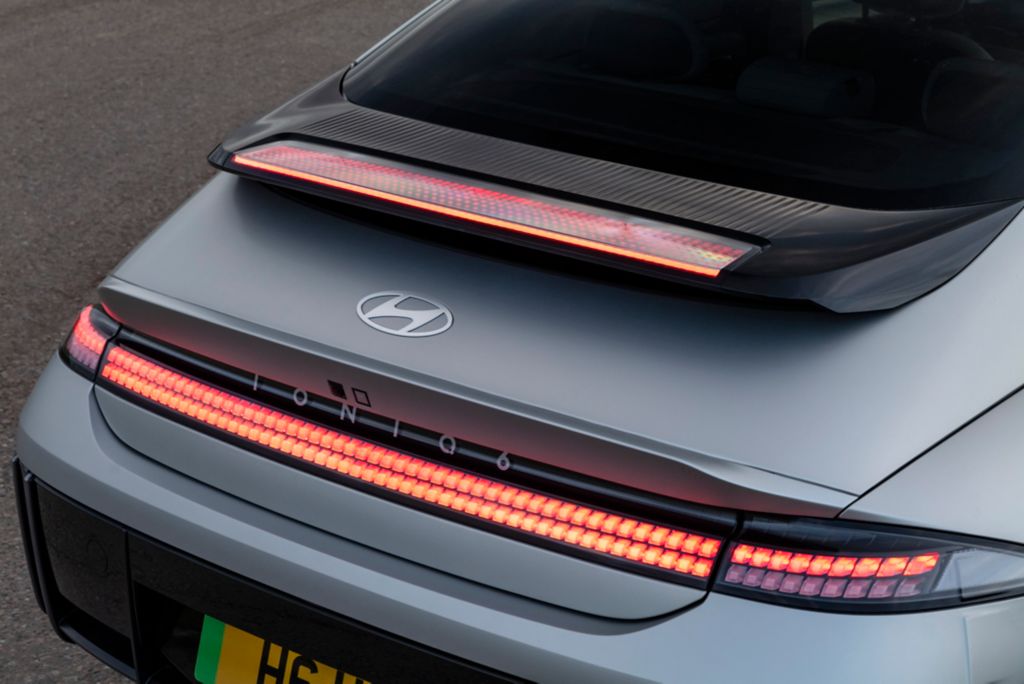
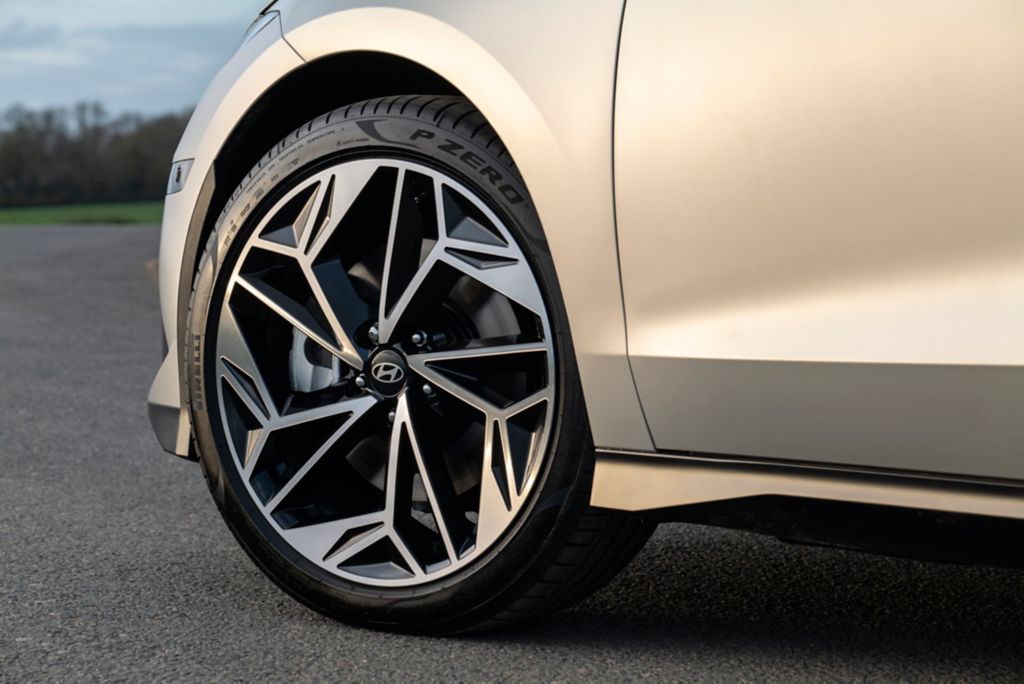
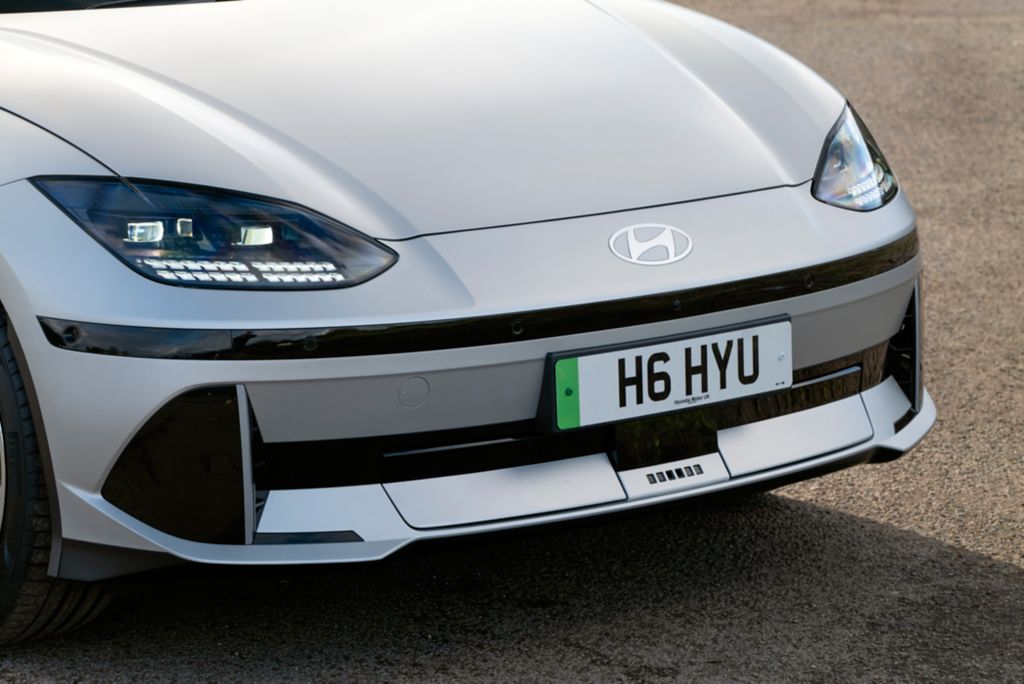
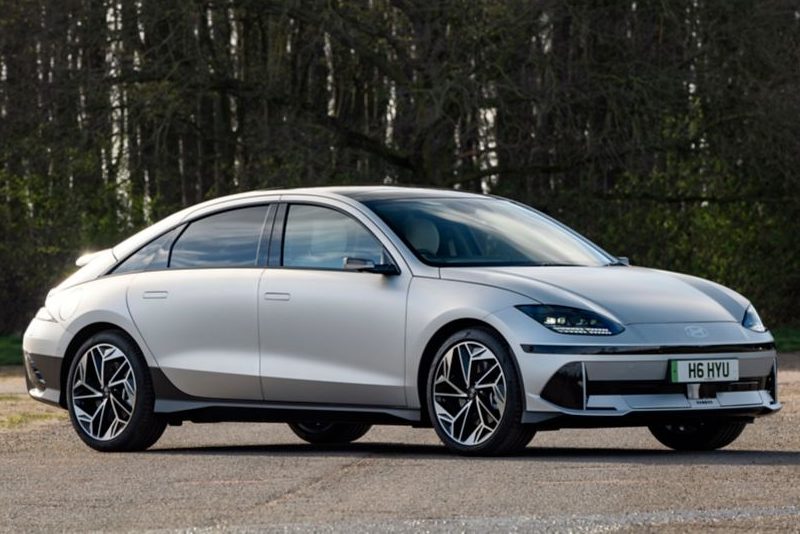
The man who designed the car (or at least takes the credit) is SangYup Lee, Hyundai Motor’s head of such things, and in our video briefing he explained that the inspiration came from 1930s airliners and streamlined road cars. That’s why the Ioniq 6 has as much of a “single-curved” profile as possible, and Hyundai actually calls it a streamliner. Details such as the elliptical rear spoiler (inspired by Spitfire wings) and plastic trim on the leading edge of the front wheelarches help maximise aero efficiency.
The bonnet and duck tail are designed to offset the curve, to make the car more visually arresting, though actually I think the various ledges and flicks at the rear detract from the overall beauty. It’s definitely not as cool as the Ioniq 5, but then it’s meant to be something quite different. Hyundai is going for a chess set line-up of models – distinct yet clearly part of a set – rather than a Russian Doll approach.
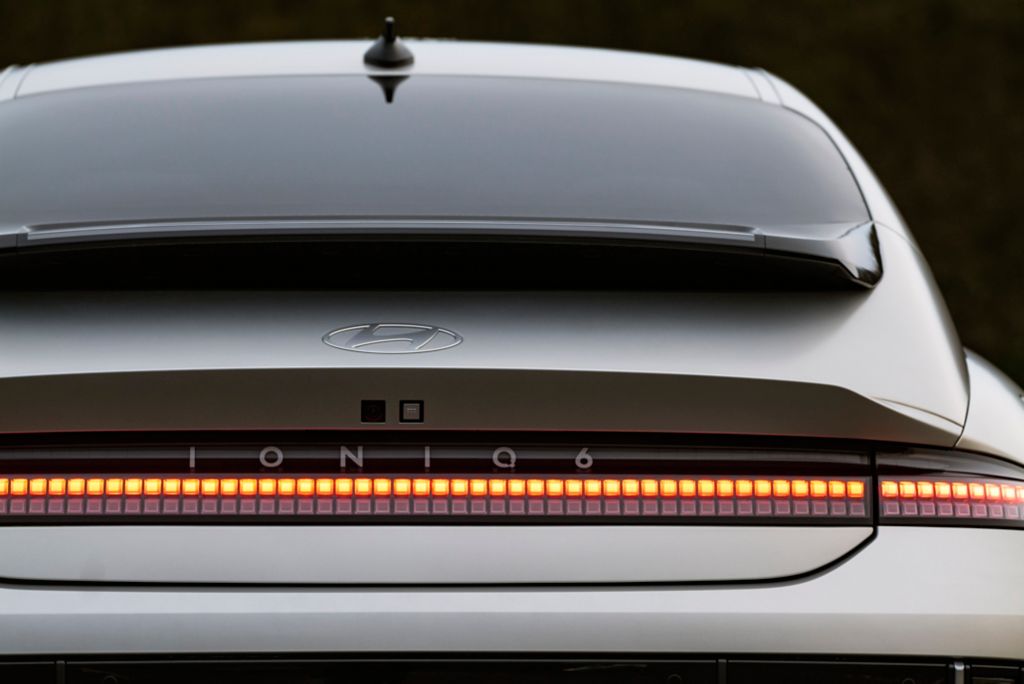
Still, it’s not the least attractive car Hyundai has ever produced, and I do admire the boldness, especially when many other carmakers are creating cars in jelly moulds. Or designing in the dark, as BMW seems to be right now. And the full width pixelated light signatures are very cool.
As a pure-electric saloon, the Ioniq 6’s most obvious rival is the Tesla Model 3, but there’s also the likes of the Citroën e-C4X and BMW i4.
Interior
Inside, the design is focused very much on space – on the horizontal plane, anyway. Hyundai has pushed its front and rear wheels as far apart as possible, and this distance (the “wheelbase”) is the largest in the Ioniq 6’s vehicle segment. This frees up cabin space… for legs, at least, with both front and rear passengers getting room to wiggle their toes with wild abandon.
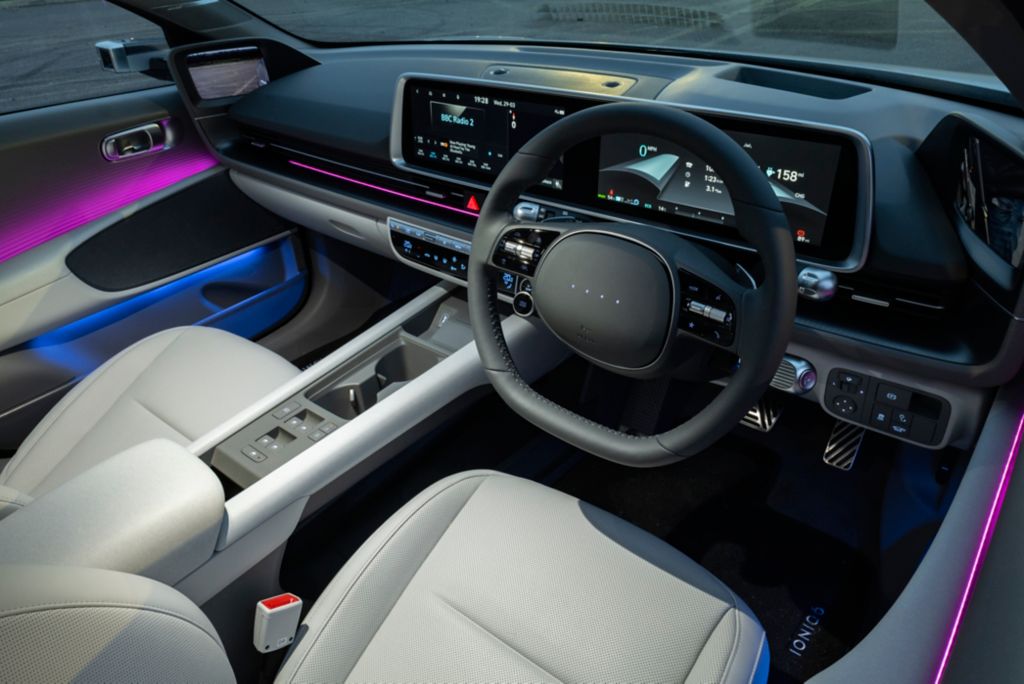
But while concentrating on legroom, Hyundai forgot about headroom for taller occupants. Not to a critical degree, and to be fair there’s more distance between the rear seat base and the roof in the Ioniq 6 than the outgoing fourth-generation Toyota Prius (though that’s not saying much), but if you’re over around 6ft you wouldn’t want to spend too much time in the back.
Much worse is that if you have specced the sunroof even vertically-endowed occupants in the front seats will struggle to find a comfortable seating position. That’s because the sunroof adds thickness to the roof lining. I’m 6ft 5in and honestly haven’t been so uncomfortable driving any other car in the modern era. In fact, I had neck pain the following day from the angle at which I had to tilt my head to fit in the Ioniq 6.
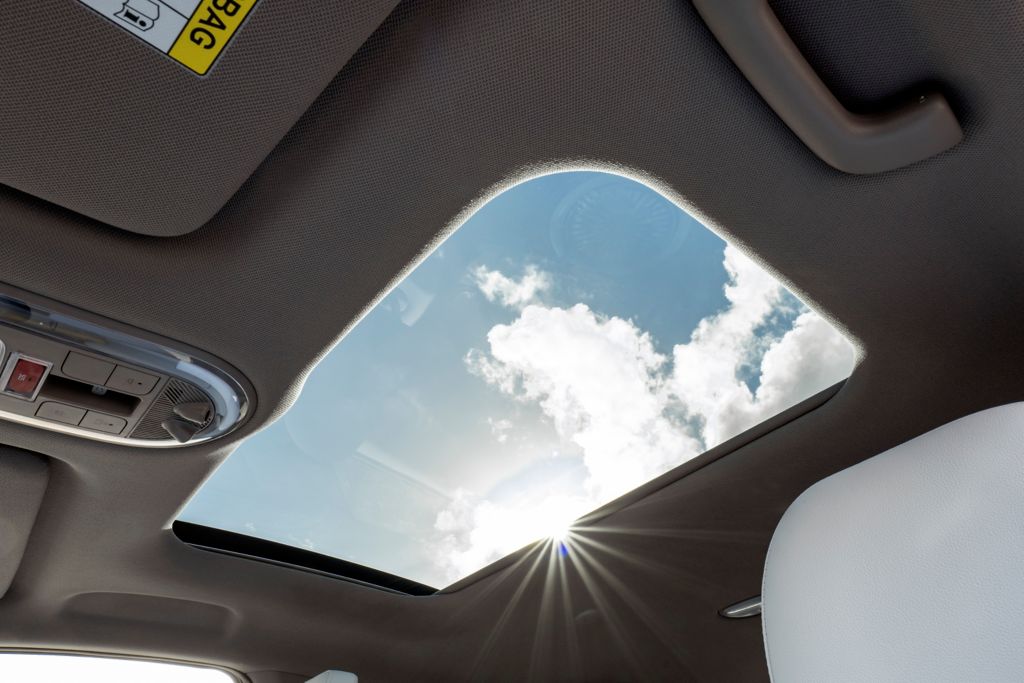

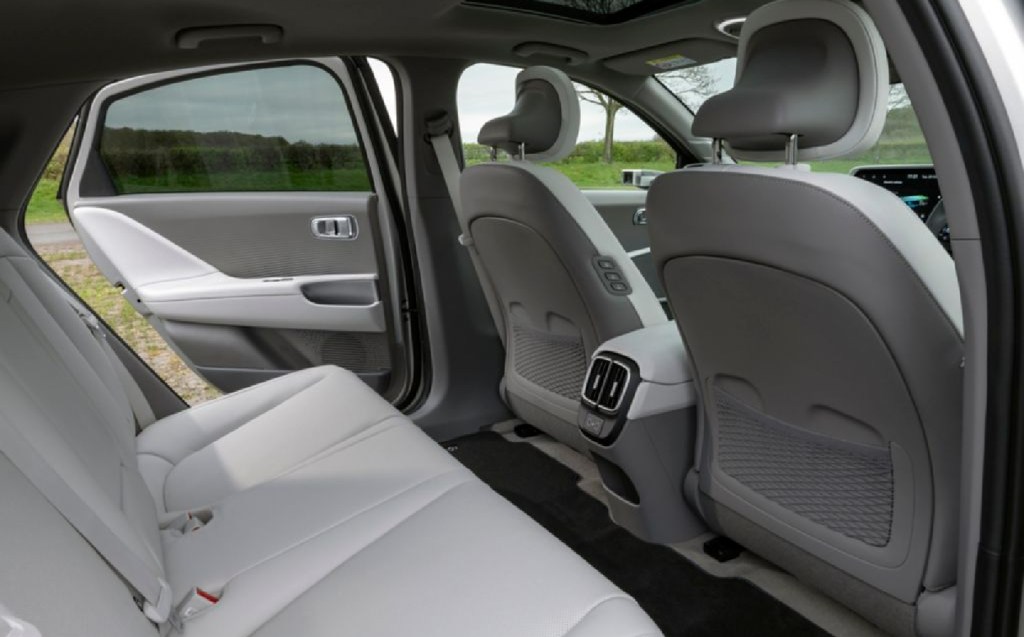
Reclining the seat back helps with head space but then the steering wheel doesn’t come close enough to you, so I ended up sliding the seat forward and driving with folded legs.
It was much better without the sunroof, it has to be said, and I appreciate that I’m an outlier – very few people are so unfashionably long. But note to Hyundai: if lending the car to Jeremy Clarkson don’t give him one with a sunroof.
Ergonomics aside, the cabin is nicely laid out and the materials used feel far from cheap. They’re eco-friendly, too, with cloth seats made from recycled PET plastics, floor mats made from old fishing nets, and “bio paints” derived from vegetable oils. And if you must have leather upholstery, you can at least tell people the dyeing process involved flaxseed oil, which reduces water waste. Apparently.
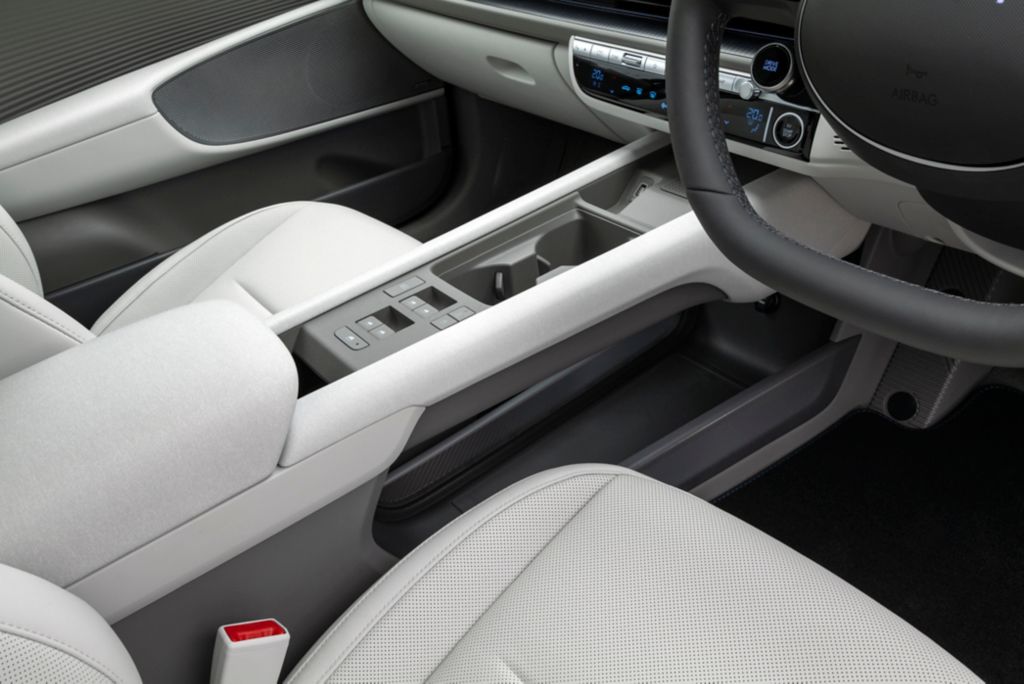
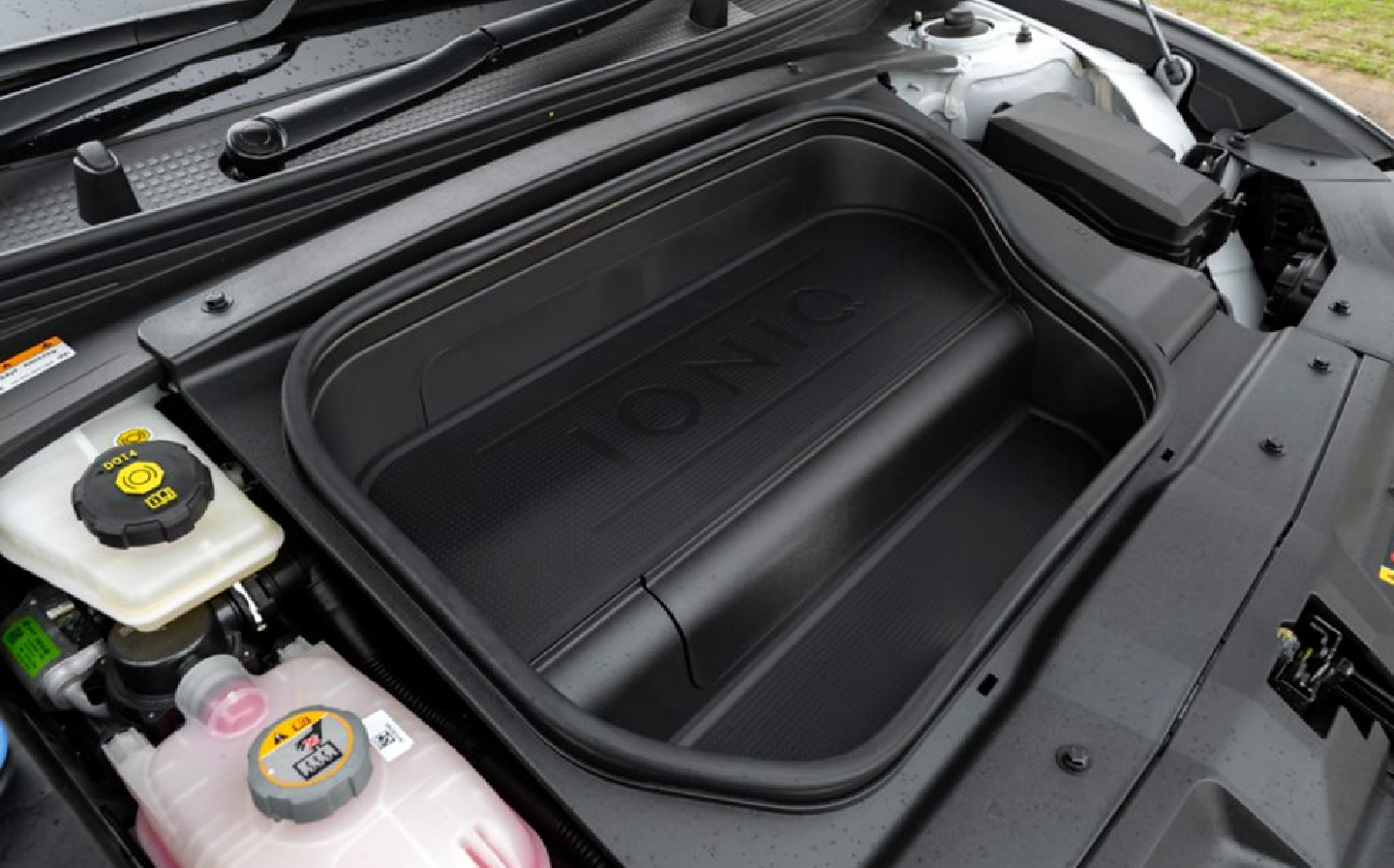
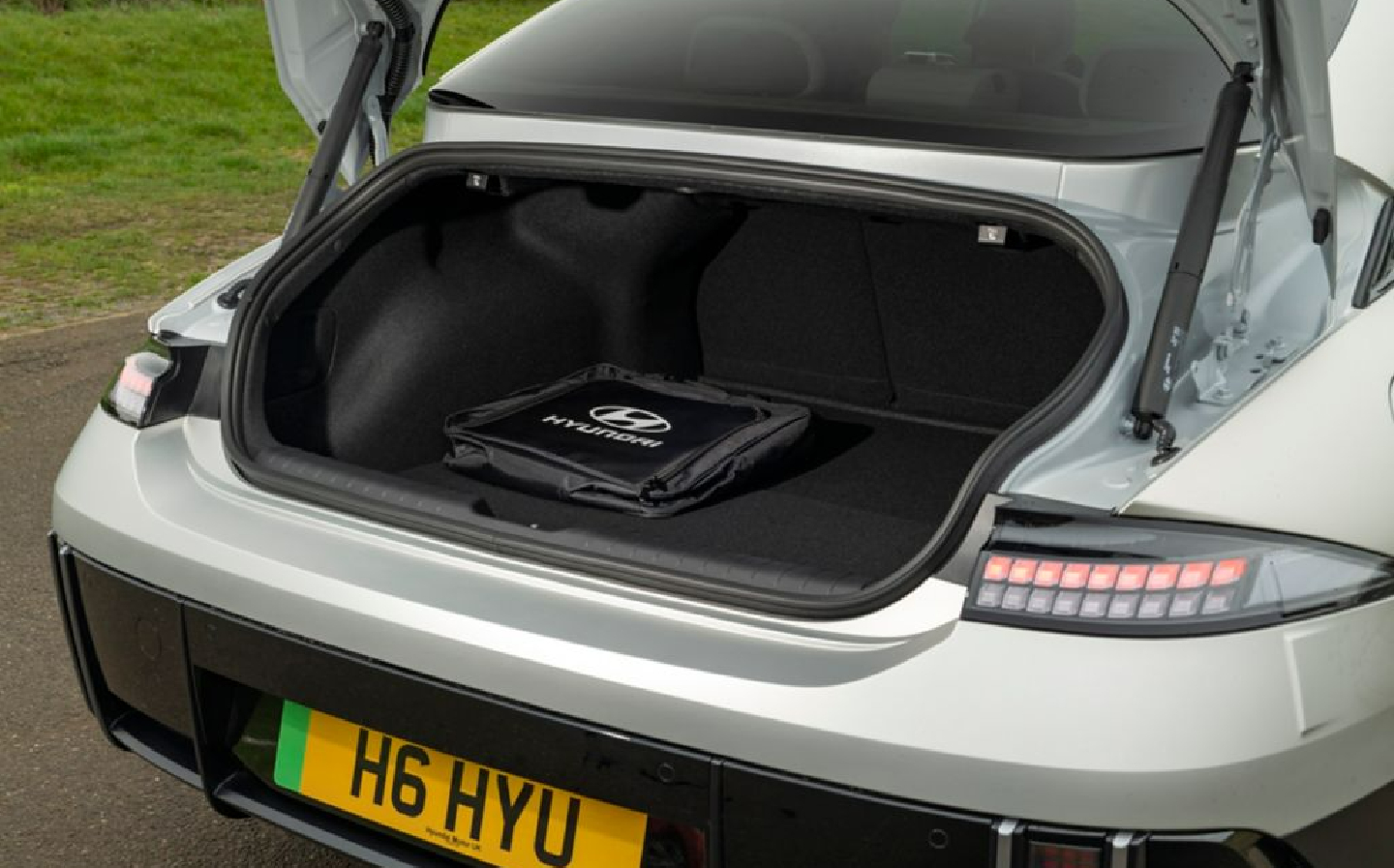
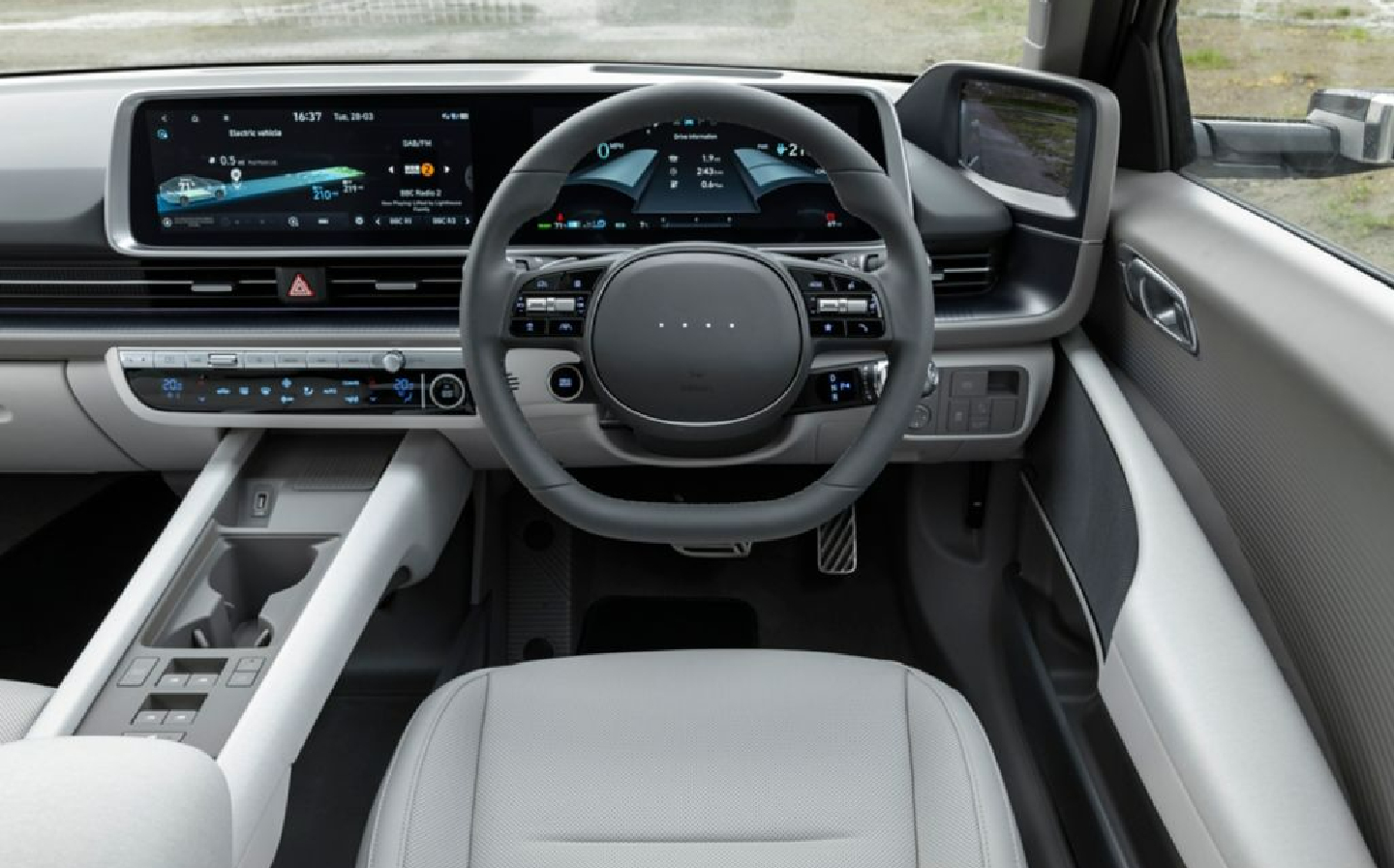
There’s also a decent amount of space for luggage: 401 litres in the boot and an extra 45 litres under the bonnet, if you buy the RWD version.
Technology and safety
Hyundai is one company getting the mix of physical and digital controls right, and the Ioniq 6 is no exception. Along with four pixels (four dots in Morse Code being an “H”) on the steering there are a lot of buttons, meaning most tasks can be completed without taking your hands off the wheel, and refreshingly they’re not touch sensitive – they’re proper push buttons and dials – meaning brushing them by mistake won’t set the cruise control or mute the stereo (this can happen in other brands’ cars, trust me).
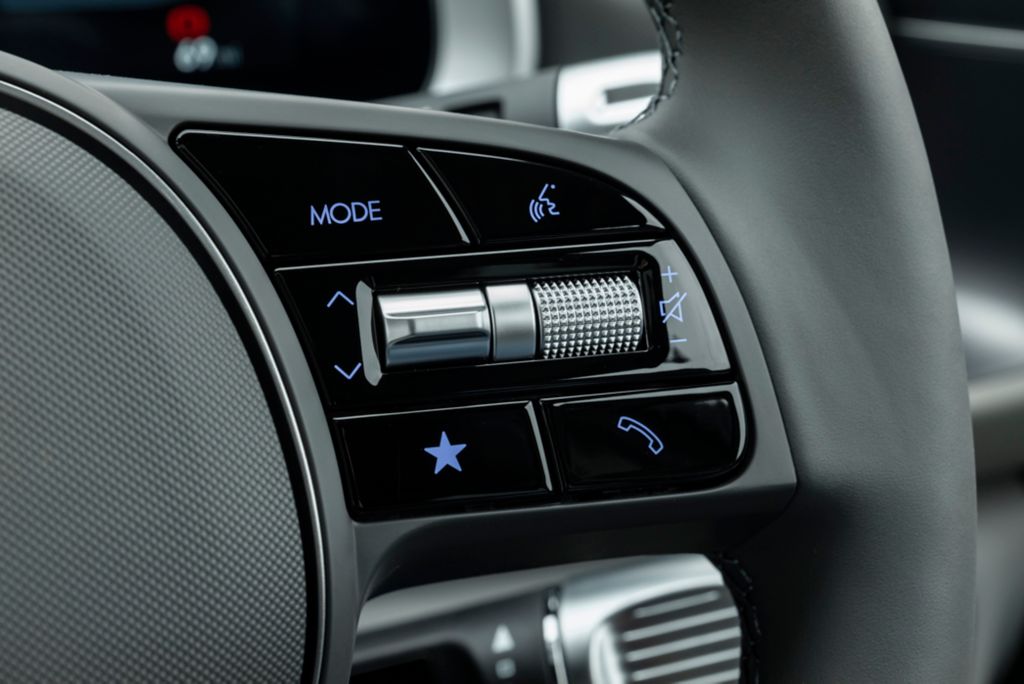
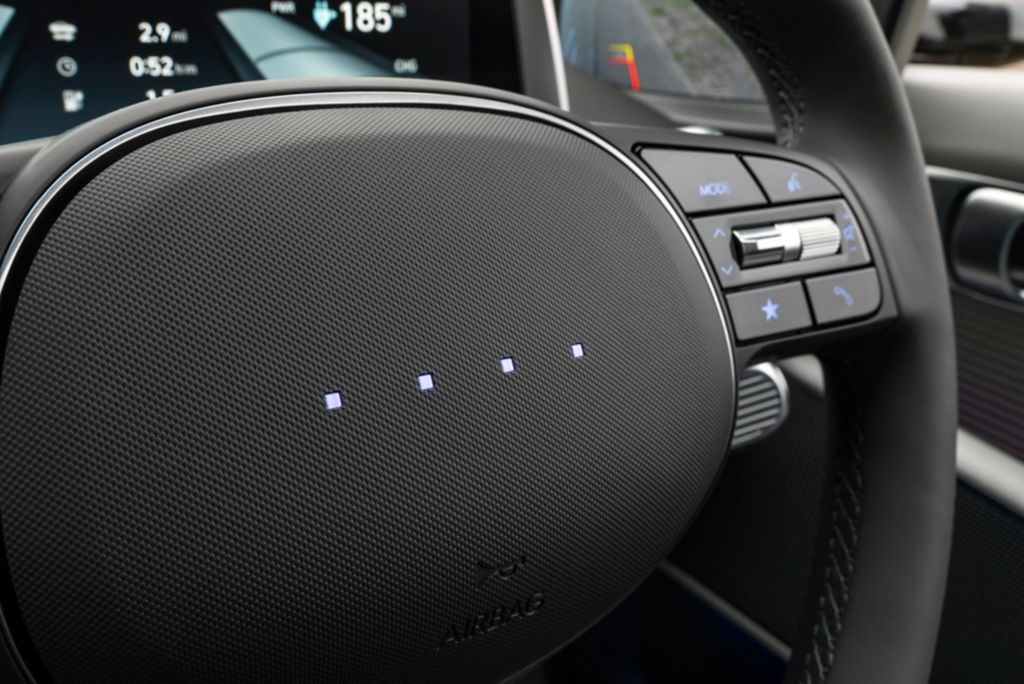
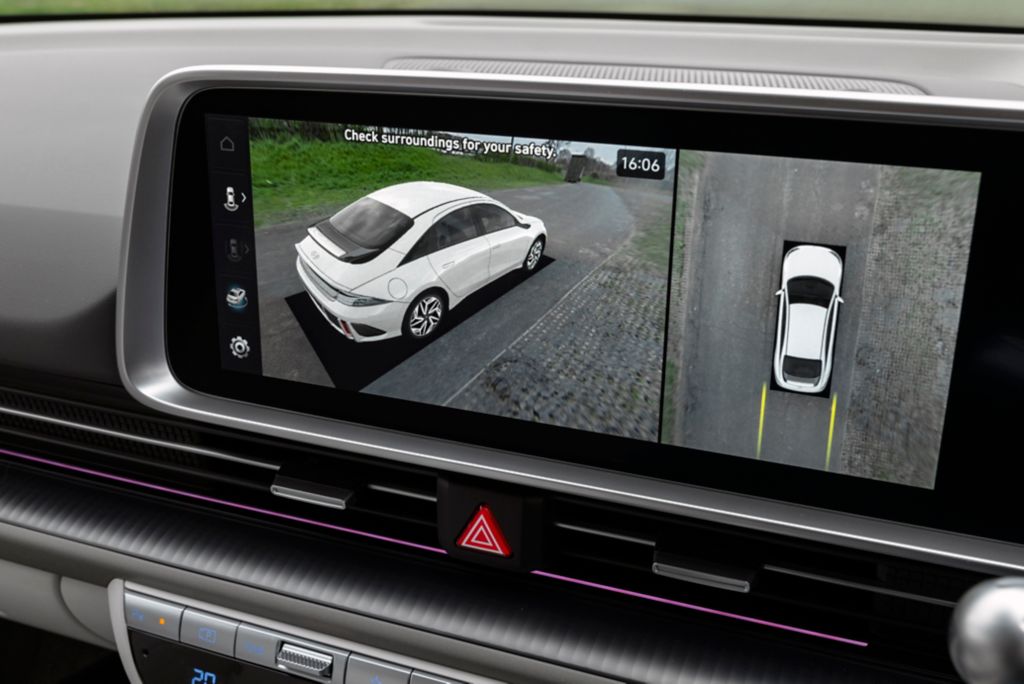
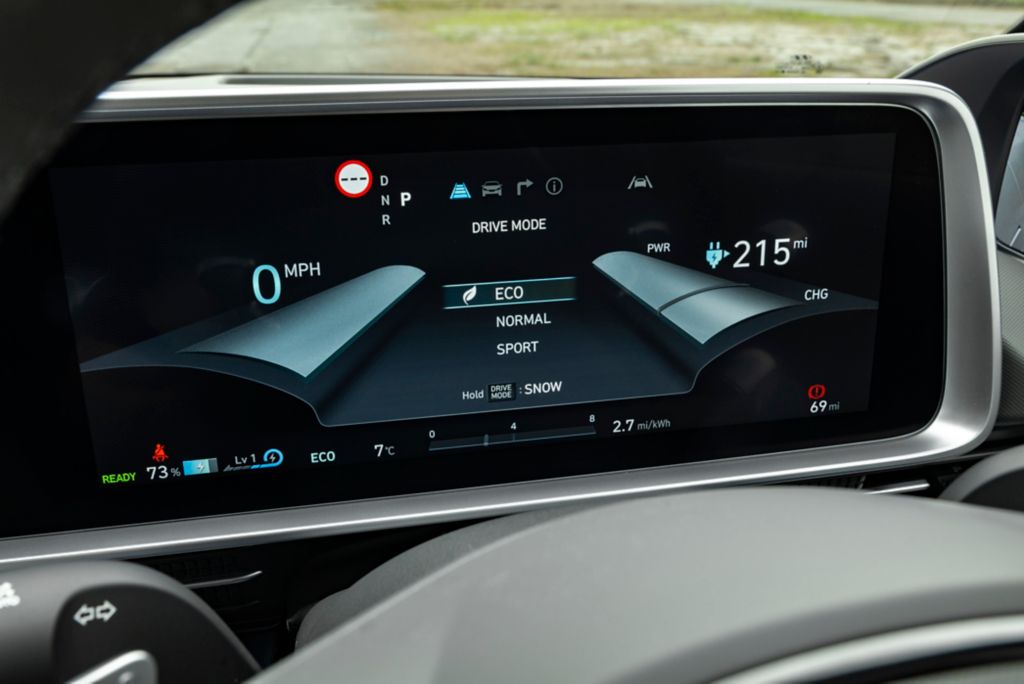
Hyundai has even included proper buttons on the centre console, below the touchscreen, for the likes of the sat nav and radio. If there’s a criticism it’s that they’re not quite at arm’s reach, meaning you have to lean forward slightly.
The look of the dashboard is good, though. The digital driver’s display is massive and features really crisp, clear graphics. To the left of that is a separate screen for the infotainment system, though both are set into a combined bezel making it look like a continuous panel. That touchscreen is also attractively-designed, with bright colours and graphics, and of course it runs Apple Carplay and Android Auto, and features over-the-air updates.
As with the Hyundai Nexo hydrogen car (and the likes of the Honda e and Audi e-tron), the Ioniq 6 in top spec Ultimate trim does away with wing mirrors, instead using cameras on the side of the car and screens inside the doors to display the images. These are not to everyone’s taste, and it takes a while to get used to looking inside the car rather than outside for the rear views they offer, but there are reasons for using this tech — it’s not simply because a designer thought it looked flash and modern.
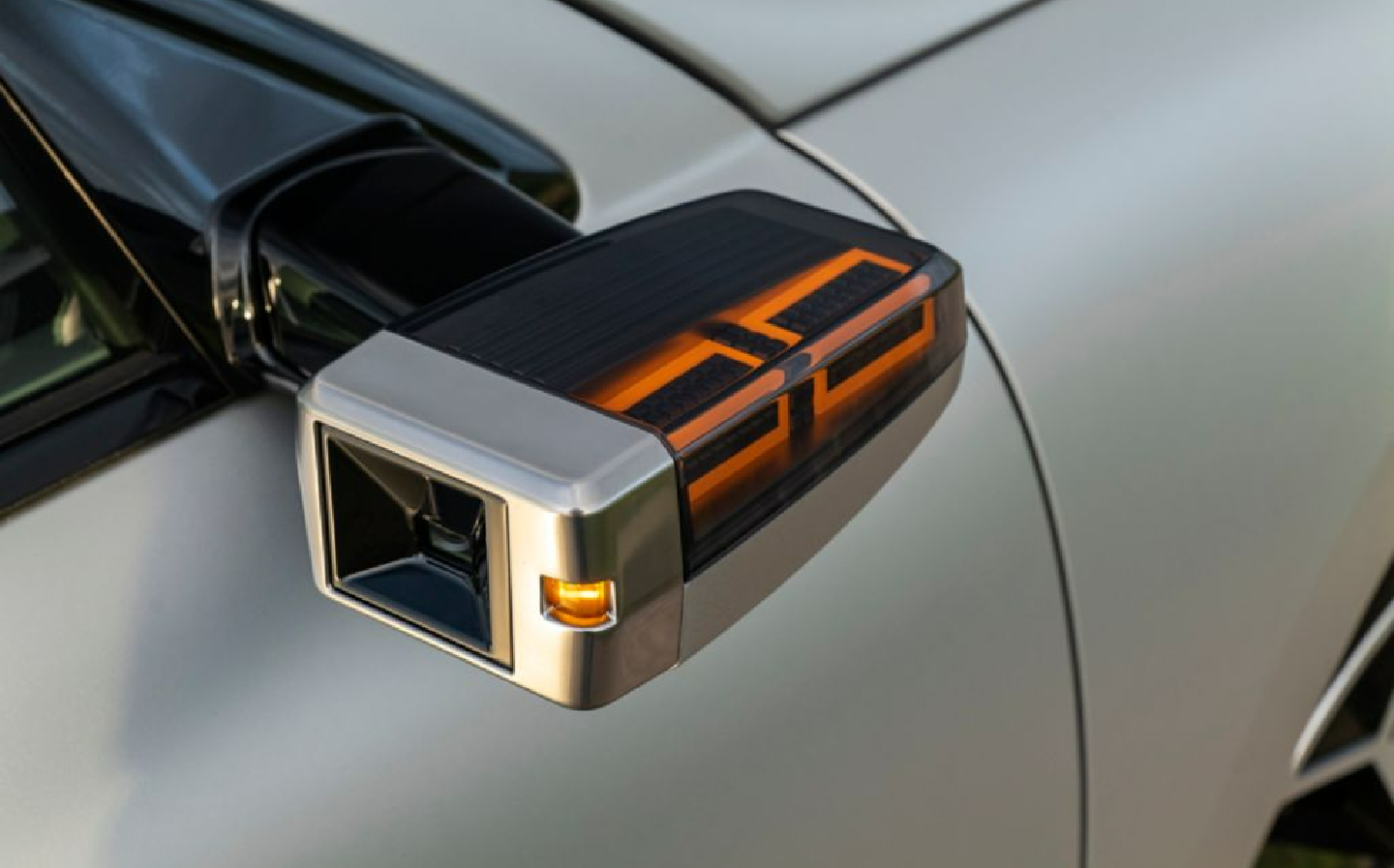
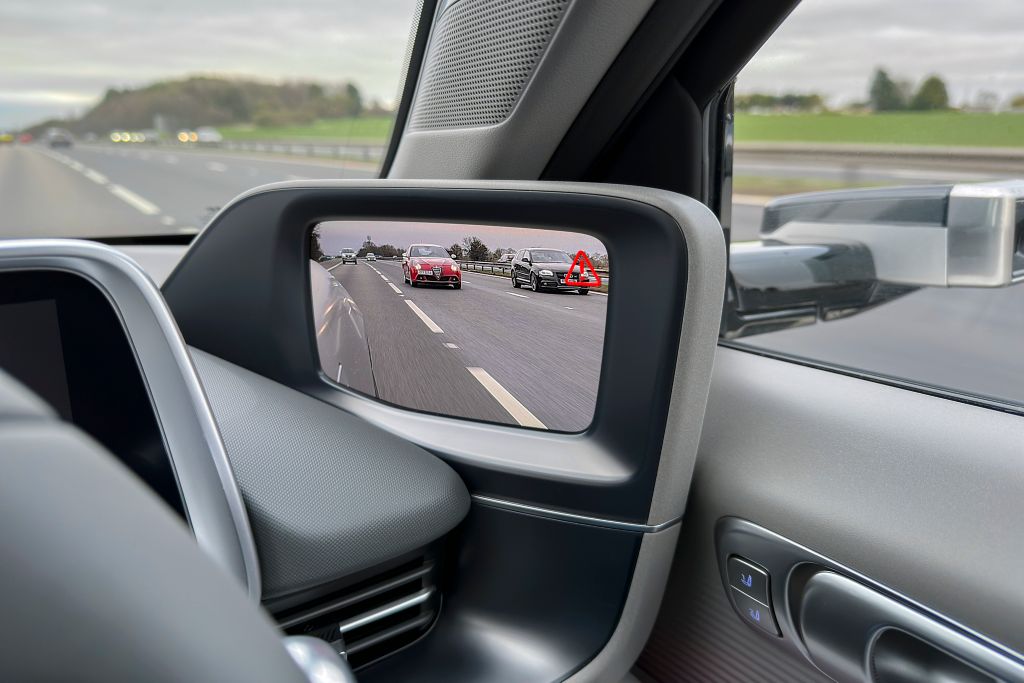
The main advantages are in terms of aerodynamics and wind noise, as the camera housing is smaller than a regular mirror, and when you’re aiming for maximum aero efficiency that’s a fairly obvious win. It also means that however tall you are, the cameras won’t need adjusting for the perfect view… though curiously you can still adjust their angle with controls under the dashboard. They also have clear images in low light and rain.
While a number of people will find the video “mirrors” a little too weird and distracting, everyone will be irritated by another piece of tech in the Ioniq 6: the speed limit alerts. Every time you go one or two miles an hour over the speed limit the car bongs at you. Every time.
Which would be fine if everyone on the road drove under the speed limit, but the fact is nobody does… to keep up with the flow of traffic you inevitably find yourself driving over the limit by a few miles per hour.
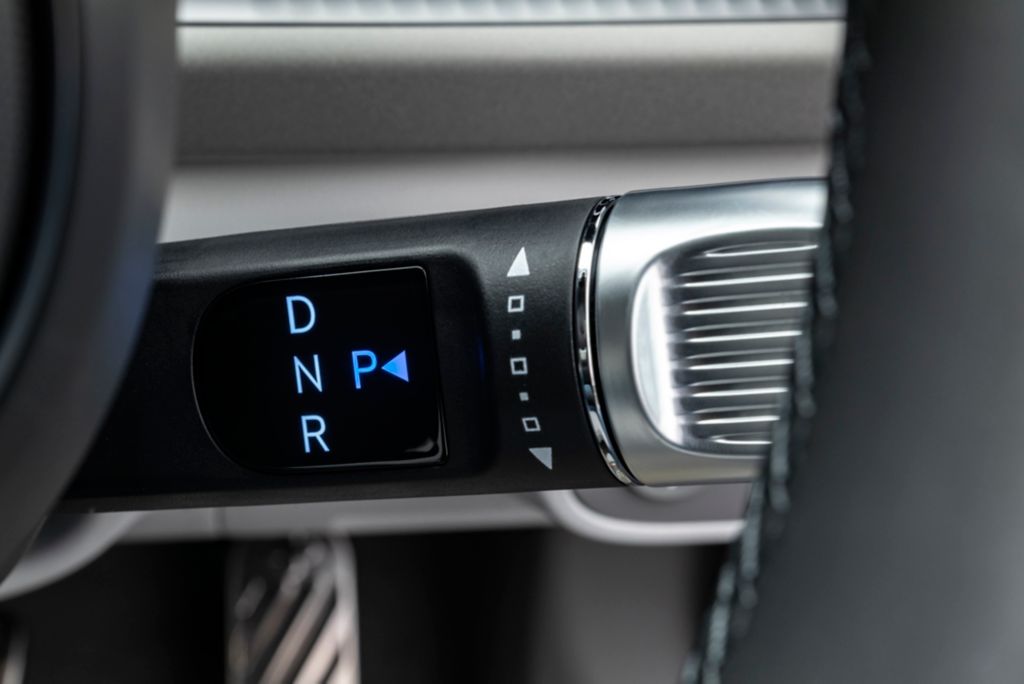
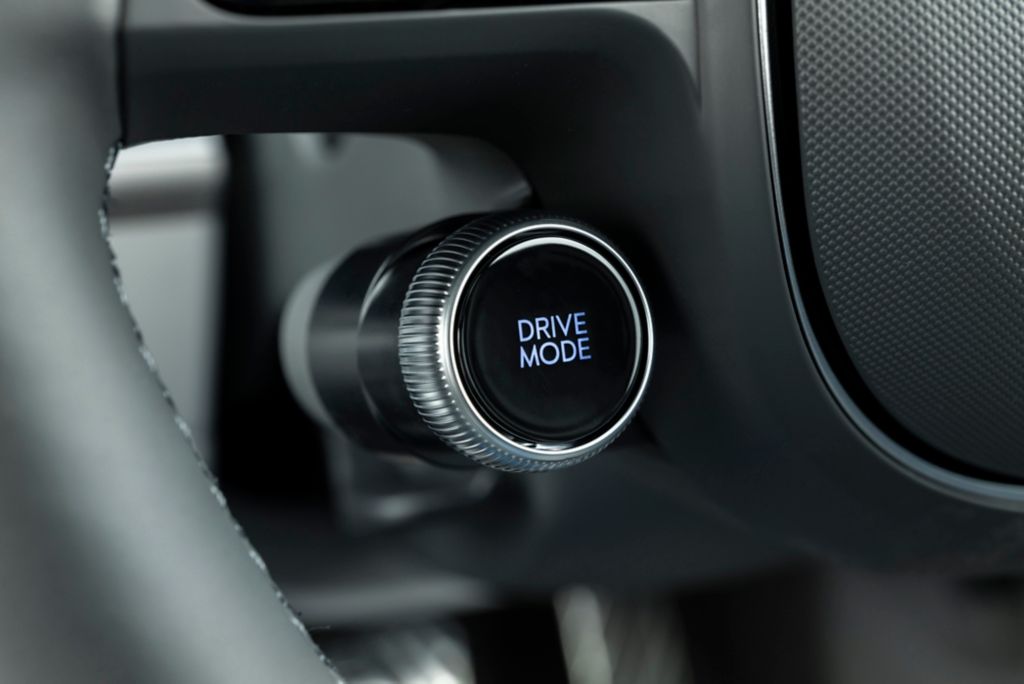

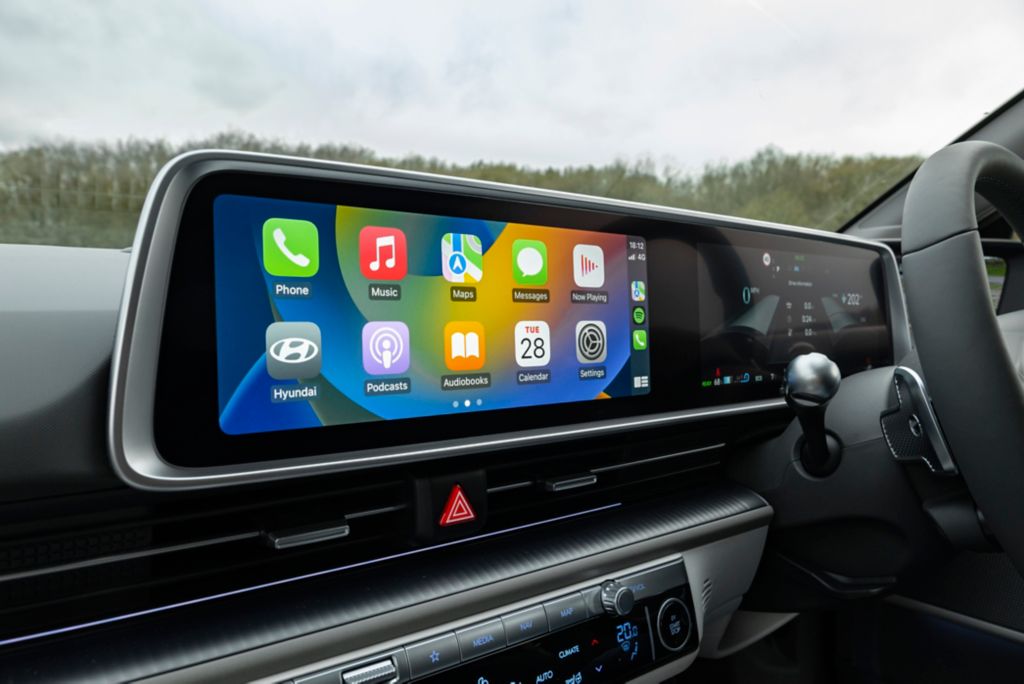

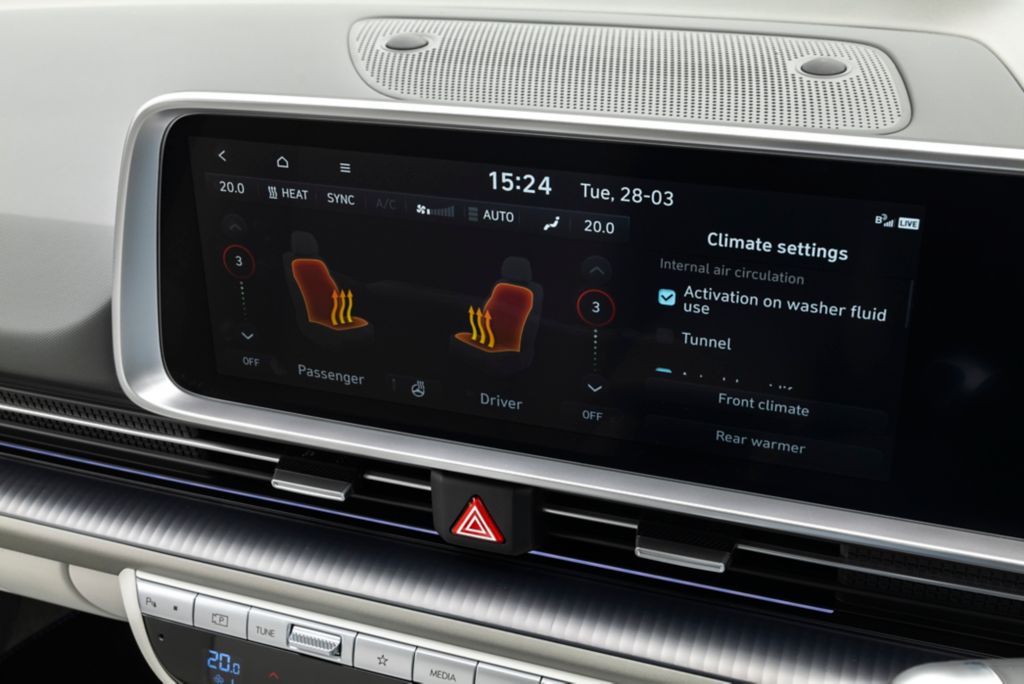
The result is a journey filled with annoying bings and bongs. One of the Hyundai team was delighted when I found a way to switch it off, via a submenu in the infotainment system, as it meant he could inform all the other irritated journalists that it wasn’t an EU-directed requirement to have it on permanently after all. Switch the car off and then switch it on again, though, and the system resets, I was told.
While that’s mind-meltingly frustrating, wait until the car gets the speed limit wrong and thinks you’re on a 30mph road, when it’s actually a 40. That happened to me during the test drive. “BONG!” said the car, at which point I was ready to put my fist through the touchscreen.
At least the lane keeping assist system is less intrusive than on some other cars, giving a gentle nudge on the wheel rather than a panicked tug when you venture outside your lane (necessary when overtaking cyclists and pedestrians, cutting corners on empty roads or navigating city streets). Even better, you can turn that off altogether with a long press of a button on the steering wheel.
Of course, crash testing organisation Euro NCAP loves all the nannying and the Ioniq 6 was awarded a five-star safety rating. In addition to the systems mentioned above, there’s also blind spot collision avoidance assist, forward collision avoidance for everything from pedestrians to other vehicles, rear cross-traffic collision avoidance and tyre pressure monitoring. There are also seven airbags but with all the safety monitoring kit, actually hitting anything seems fairly unlikely.
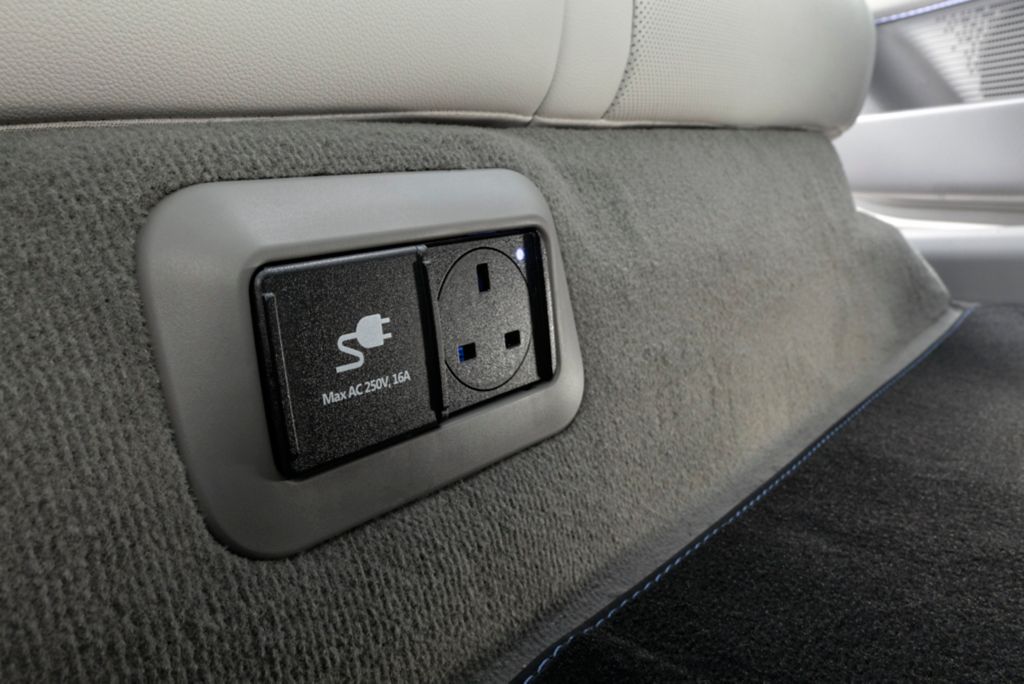
The best thing about Hyundai’s latest models, though? “Vehicle to Load” technology, which in English means a three-pin plug socket under the rear seats, or an adapter for the exterior charging socket, with the same power supply as you get from your wall sockets at home. That allows you to plug in pretty much any electric device and run it off the car – it means next time you go wild camping you don’t have to leave behind the Nespresso machine. In fact, Hyundai says you could use the car to power a 55in television for 24 hours, if you wanted.
Performance, range and charging times
Hyundai offers the Ioniq 6 in two forms: a rear-wheel-drive model with 225bhp and 258 lb ft of torque (twisting force), or an all-wheel-drive version with two electric motors and therefore a lot more poke: 320bhp and 446 lb ft of torque. If you bear in mind the Tesla Model 3 Performance has 487 lb ft, you can believe me when I say the Ioniq 6 AWD has plenty of get-up-and-go. The sprint from standstill to 62mph takes just 5.1sec, which is rapid for a family saloon.
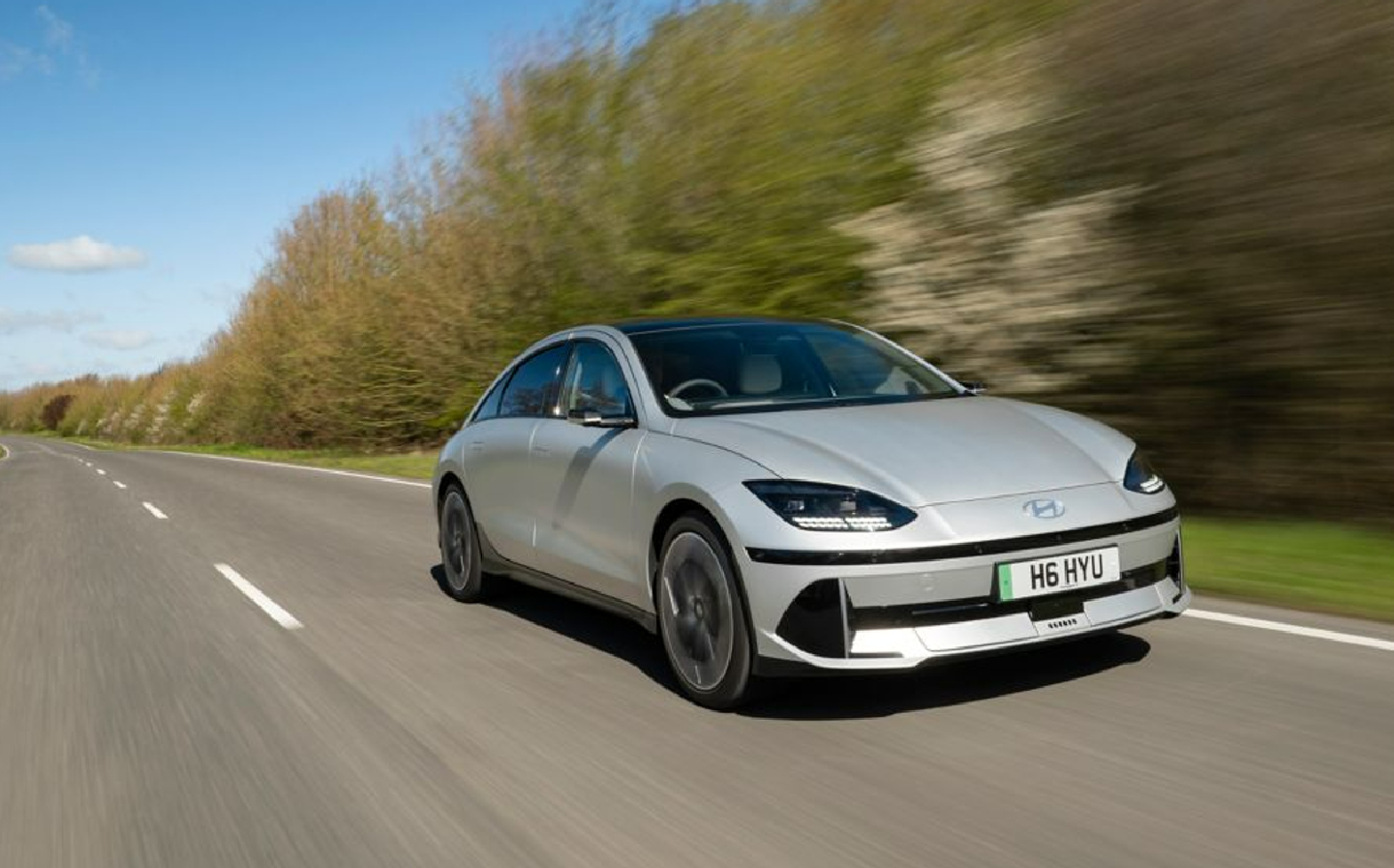
Go for the RWD model and the acceleration time is slower, of course, but still very decent: 0-62mph takes 7.4sec. And with that model, the range is improved, managing up to 338 miles (officially), compared with 322 for the AWD model.
Either way, the responsiveness to the accelerator is instant, thanks to the torque from the electric motor(s). The feel through the pedal is good, too, as it is through the brake pedal. There’s surprisingly decent power on the brakes but the way that it feels is pleasing for an electric vehicle; progressive and as far from snatchy as you can get.
The Ioniq 6 features regenerative braking, of course, which harvests energy normally lost as heat back into the battery. The level of regen is controlled using paddles behind the steering wheel, with five levels ranging from zero (the car coasts when you lift off) to “max”, which results in almost one-pedal driving, where you rarely need the brake. Each driver will have a preferred setting but I like the paddles because you can adjust the resistance as you drive, allowing increased regen when approaching a tight corner and switching it off entirely on fast, flowing roads.
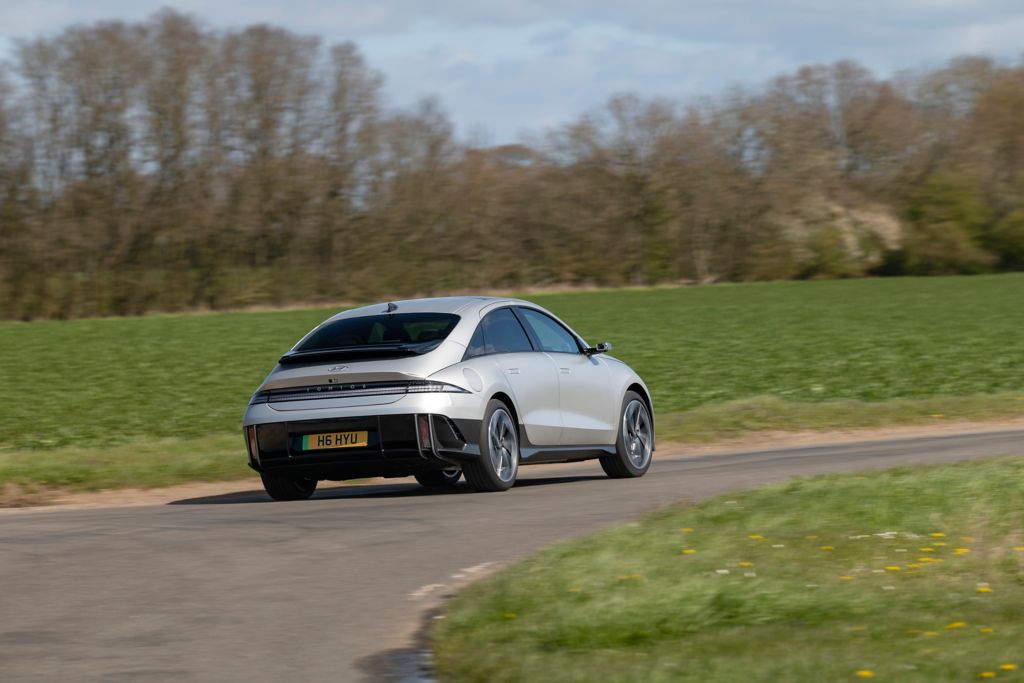
Whichever version of the Ioniq 6 you go for, it gets the same battery, with a capacity of 77.4kWh. How far it’ll take you depends on whether you have one or two motors: 322 miles for the AWD model or 338 miles for the RWD version.
Those are the official ranges, based on the standard test for all EVs in Europe now, but as always they should be considered guides rather than gospel; cold weather, exuberant driving, hilly terrain and plenty of other factors will affect the real world range. Lots of time on motorways will sap energy quickly, but this is where the slippery shape of the Hyundai will pay dividends versus most of the competition.
As a guide, over 60 miles on a mix of roads I saw an indicated 3.5 miles per kWh, which is pretty impressive given how spiritedly I was driving, and would mean 271 miles before needing to plug in.
Had I needed to top up on-the-go, it wouldn’t have taken long. The 800-volt electrical system supports DC rapid charging up to 220kW, which is nearly as quick as Tesla’s V3 superchargers (up to 250kW). If you can find a charger that can pump out the juice that fast, the Ioniq 6 could go from 10 to 80 per cent in just 18 minutes, with up to 80 miles added in just five minutes.
Ride and handling
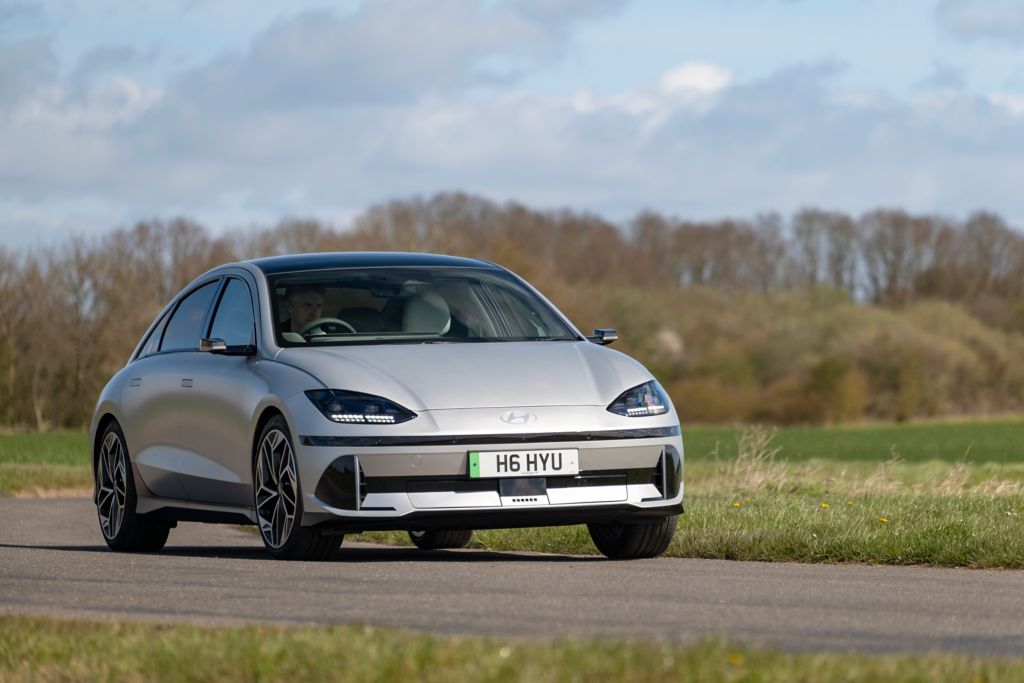
The Ioniq 5 is a pleasant car to drive but you couldn’t call it sporty when it comes to handling. That’s where the Ioniq 6 comes in – the steering has been tuned for a more instant response, and that means a much more engaging driving experience.
It’s progressive so adapts to your speed, but on a flowing B-road the initial response is sharp without making the front end overly darty, and in a straight line the car stays nicely in the groove, meaning very little work to do for the driver. That helps take the strain off on a long motorway trip.
There’s good news on the Ioniq 6’s ride quality, too, as the suspension soaks up the bumps pretty well without being overly soft, and it also goes around corners without much body roll.
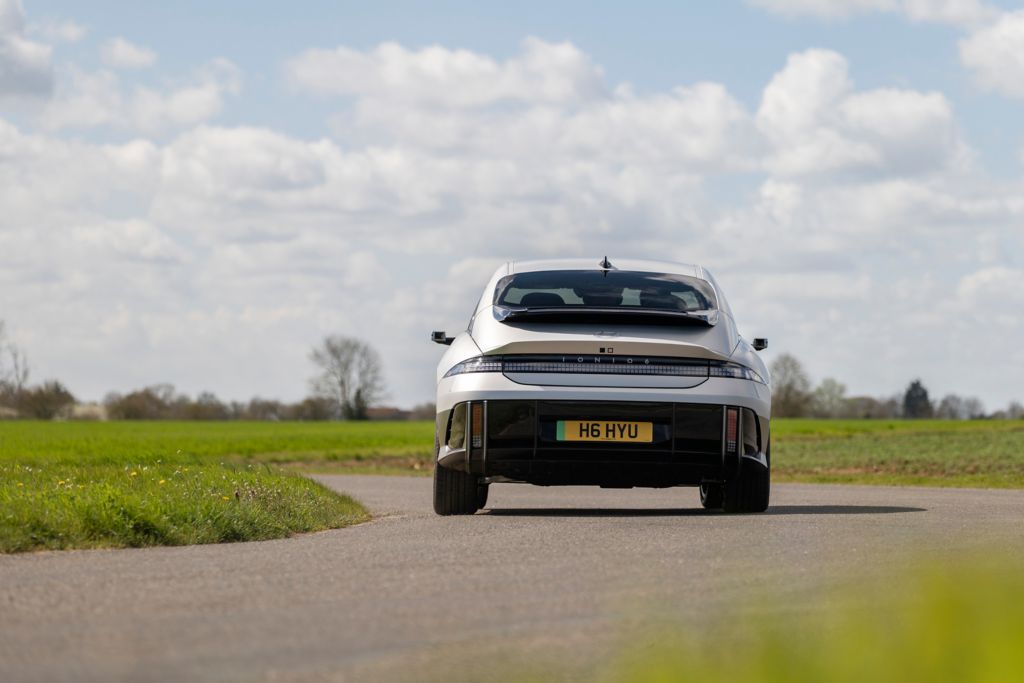
However, when you pick up speed and throw the car around a bit, the back end feels a little looser and softer than the front, which means there’s an odd balance to the car that doesn’t inspire the same confidence you get from the likes of the Kia EV6. In fact it feels slightly unsettled on really twisty UK roads.
On the plus side, the fact that it’s so streamlined means that wind noise is minimal, especially at higher speeds, though the roar from the tyres is noticeable.
Pricing and specifications
The 2023 Hyundai Ioniq 6 costs from £47,040 in the UK, which makes it quite punchy on price when you consider the Tesla Model 3 starts at £42,990 (currently). And that’s that rear-wheel-drive model in Premium specification; if you want the Ultimate trim level or dual motor version it’s an extra £3,500, while the range-topping all-wheel-drive model in Ultimate spec costs from £54,040.
Many will buy on finance deals or via company car schemes, which could mean it makes more sense. And it’s worth noting that Hyundai offers a five-year unlimited mileage warranty for the car and an eight-year, 100,000-mile warranty for the battery pack, along with five years of annual vehicle health checks.
Verdict: 2023 Hyundai Ioniq 6 review
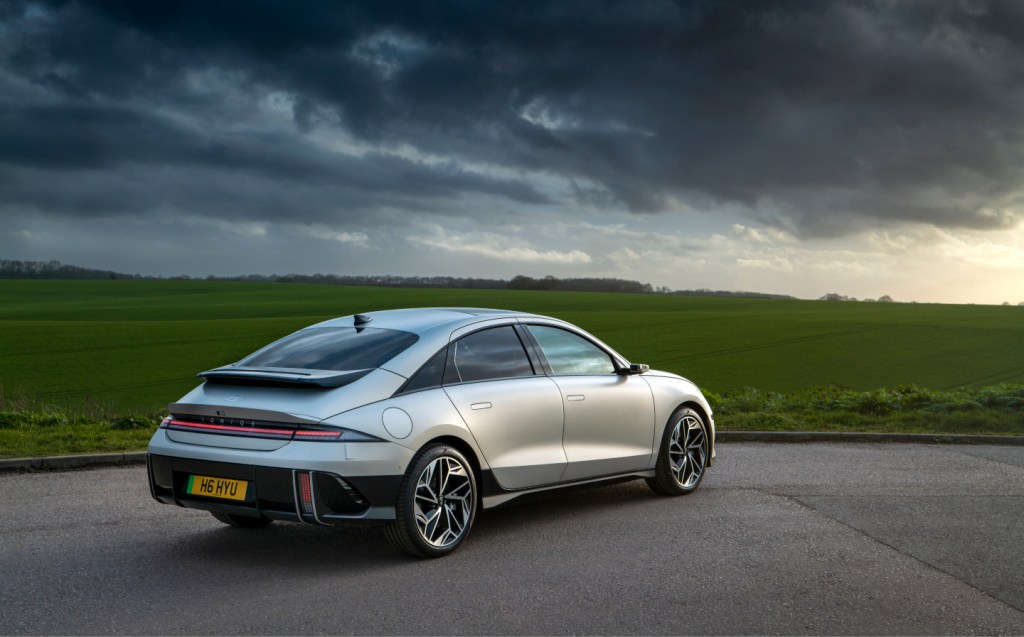
In many ways the Ioniq 6 is a remarkable car. Its slippery body results in an astonishingly low amount of drag, and that helps with the car’s excellent efficiency. The 800v electrical system means seriously rapid charging, and the official range of up to 338 miles (over a mix of roads) is excellent. It’s also a sportier option than the Ioniq 5.
Let’s not ignore the intensely annoying speed alerts, though, nor the limited headroom (with the sunroof) for very tall drivers. The design won’t be to everyone’s taste, either, and the pricing is certainly punchy compared with rivals such as the Tesla Model 3, BMW i4 and Kia EV6.
So while the hype is strong and the heart may be drawn to the innovative Ioniq 6, it’s worth taking a step back and weighing up the options carefully. That said, if you still decide to take the plunge we wouldn’t blame you.
Follow @wdron Tweet to @wdronRelated articles
- If you were interested in this review of the Hyundai Ioniq 6 you might like to watch Hyundai’s high-performance Ioniq 5 N electric car in action on ice
- Also check out our review of the regular 2021 Hyundai Ioniq 5
- Here are all the Car makers’ electric vehicle plans for 2023 and beyond
Latest articles
- Lewis Hamilton wants to design a modern day Ferrari F40 with manual gearbox
- Dacia Bigster 2025 review: The ‘anti-premium’ family SUV that punches above its weight
- Your car’s worn tyres could be being burnt illegally in India, investigation reveals
- Open-top 214mph Aston Martin Vanquish Volante is world’s fastest blow-dry
- F1 2025 calendar and race reports: The new Formula One season as it happens
- Alfa Romeo Junior Ibrida 2025 review: Hybrid power adds an extra string to crossover’s bow
- Top 10 longest-range electric cars: all with over 400 miles per charge (officially)
- Renault 5 Turbo 3E ‘mini supercar’ confirmed with rear in-wheel motors producing 533bhp … and insane levels of torque
- British firm Longbow reveals ‘featherweight’ electric sports cars with 275-mile range


